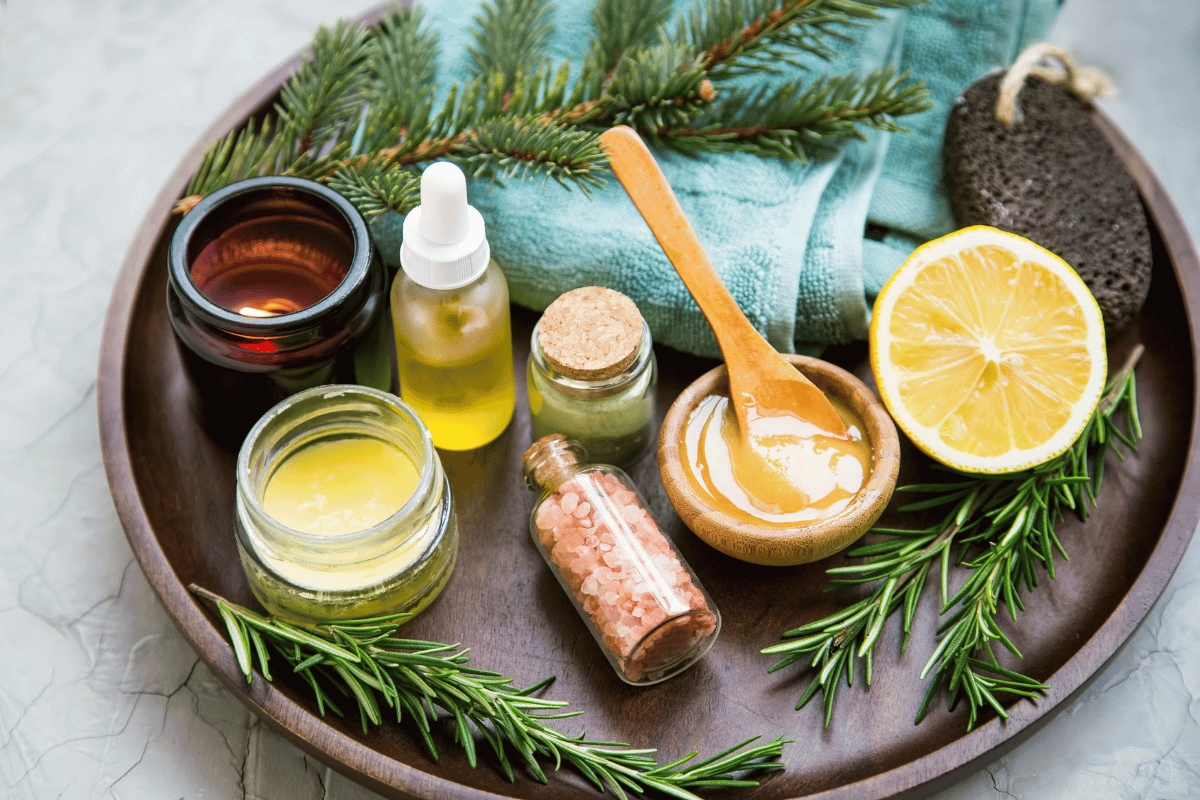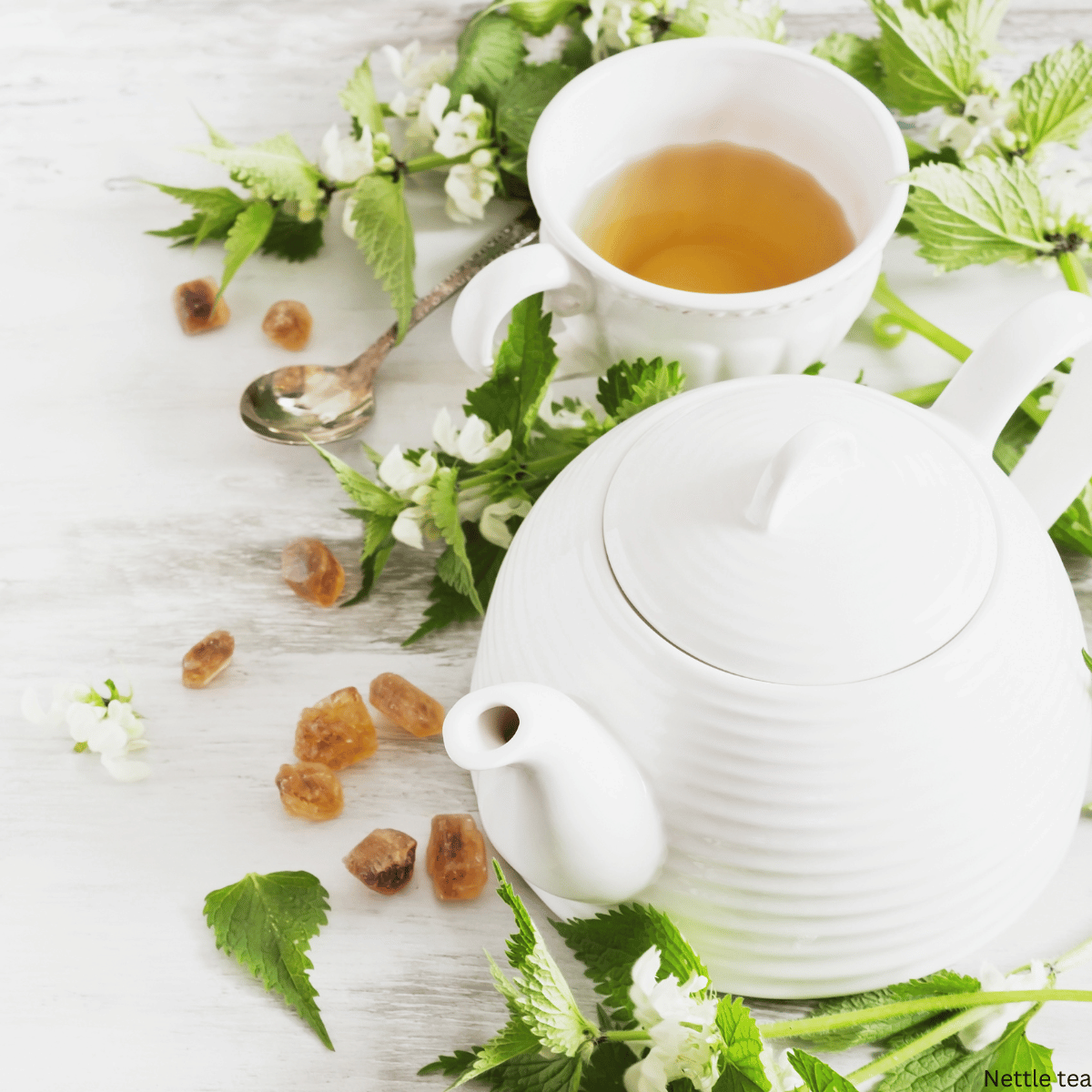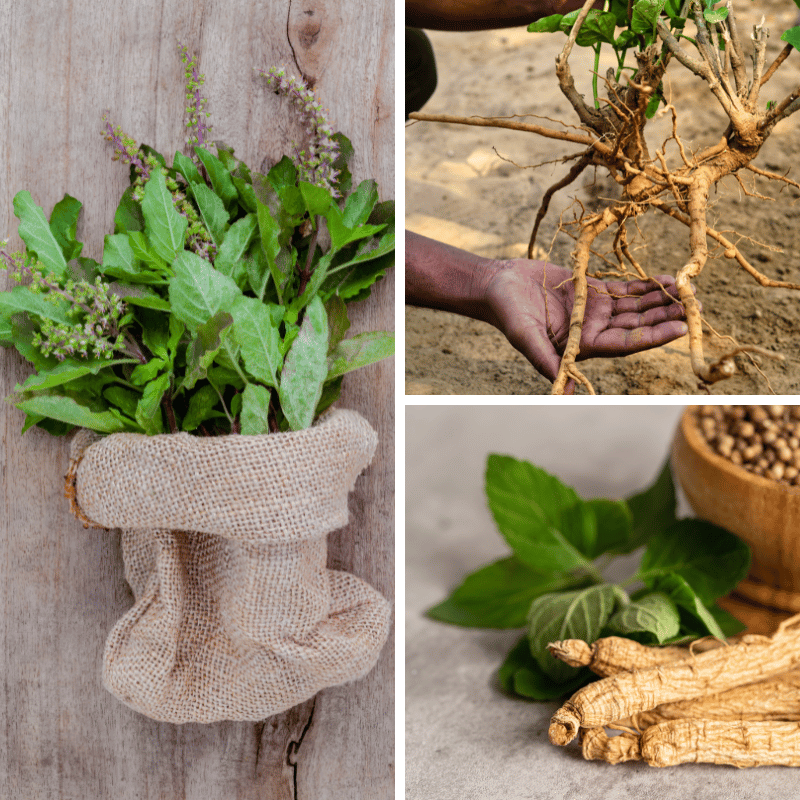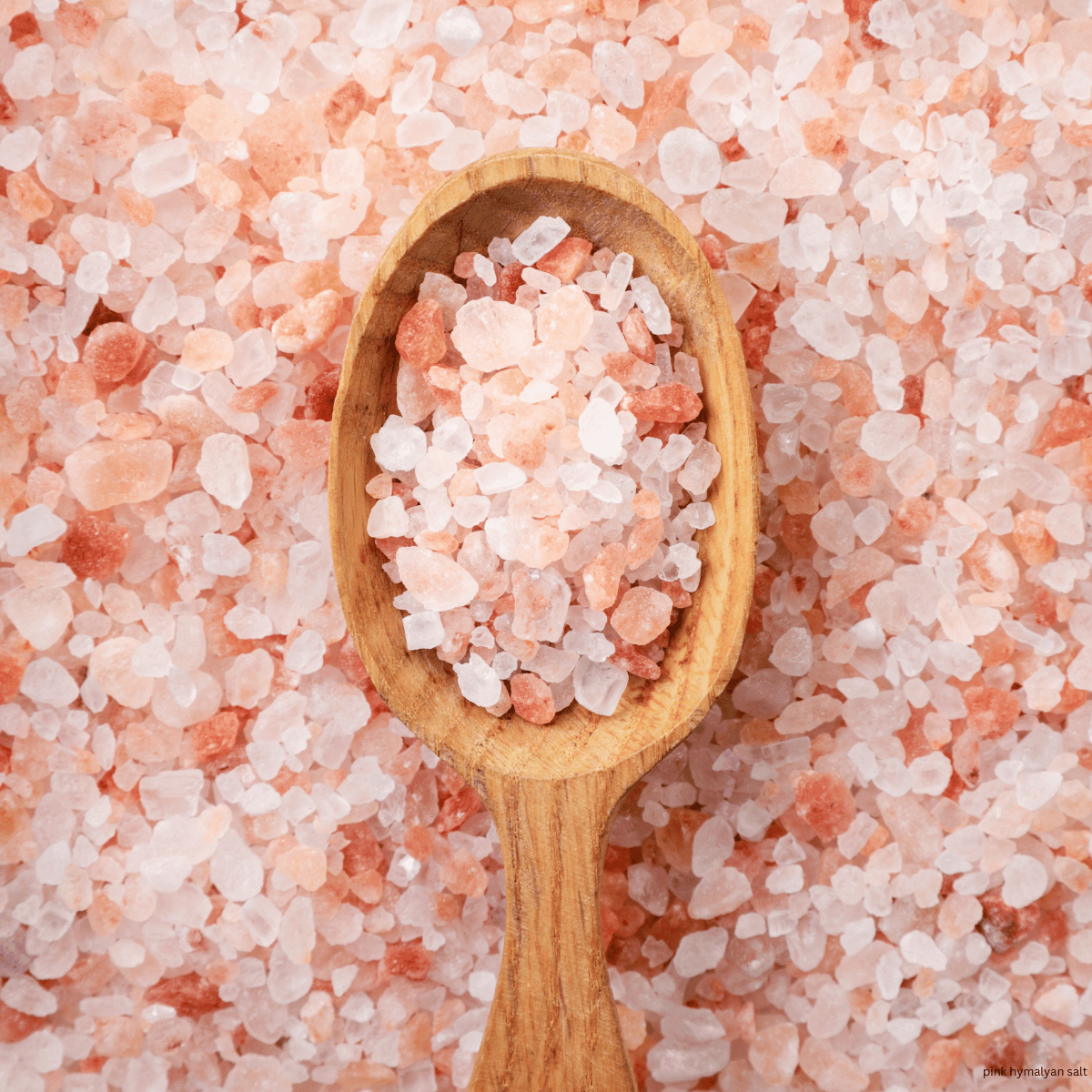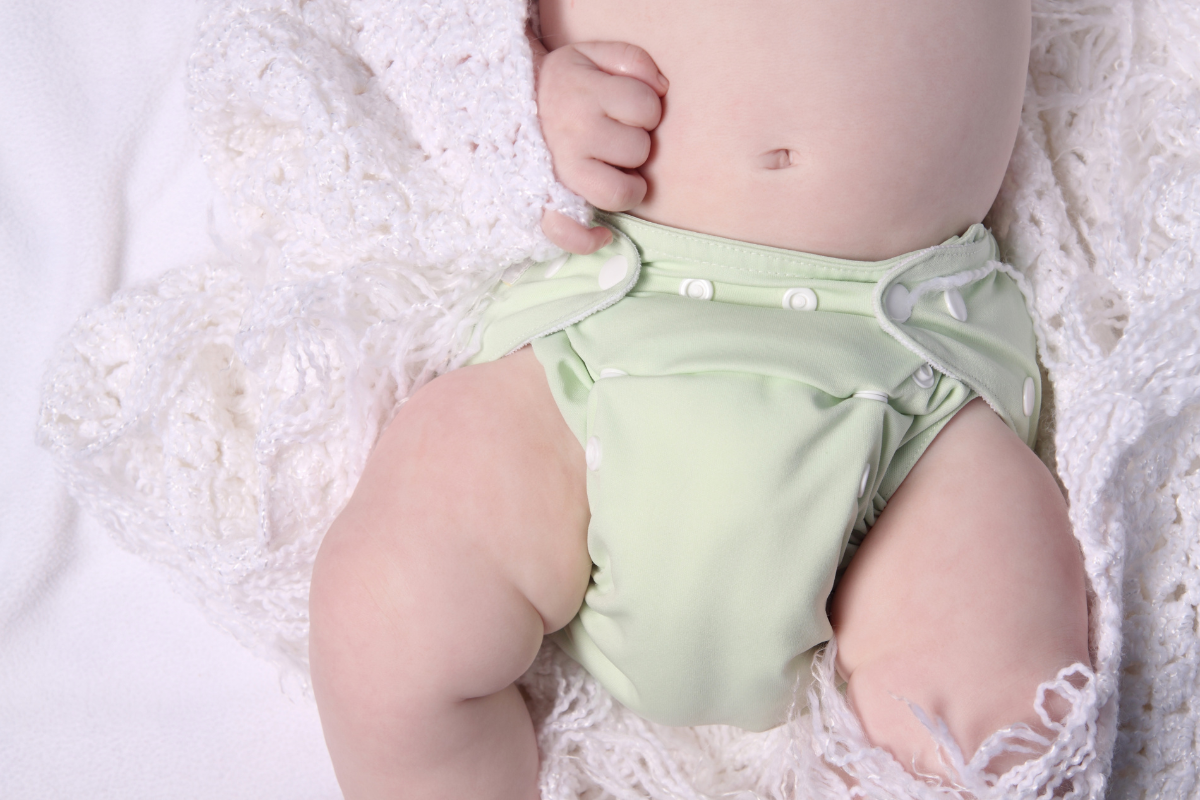Herbal Oil Guide | How to Make an Oil from Herbs
This is a step-by-step guide on how to make an herbal oil. An herbal oil is the foundation to DIY home remedies, bath and body products and more.
The world of herbalism is on the rise in our culture. Many more people in the last several years have turned to herbalism for basic home care remedies. This can be an intimidating experience for some. Statring with an herbal infused oil is a great way to learn the very basics of herbalism.
I will be answering the most basic of questions and walking you through the first steps to creating your herbal oil for your own medicine cabinet or simple DIY body care products.
Why make an herbal oil?
An herbal infused oil is easy to make and can be used on their own or made into products such as salves and ointments. There are a lot of different combinations you can create and for various products when making them yourself at home. An herbal oil is the first step to creating an oil-based product such as a salve.
Making your own medicinal and personal care products can be an empowering experience. You know exactly what has gone into your products, no hidden chemicals here!
When you make your own products, you can save money in the long run and also be more self-sustainable in your natural living journey. You will not easily run out of something you need when you keep the ingredients stocked at hand.
What can you make with an herbal oil?
There are many different products that you can make. You can make strong medicinal oils for salves, balms or ointments or even a sweet-scented massage oil. Some other items you can make are lip balms, marinades, facial serums, hair treatments, body creams and soaps!


What types of oils can you use with herbs?
There are a variety of oils that can be used. Most commonly are:
- olive oil
- fractionated coconut oil (MCT)
- grape seed oil
- almond oil
- peanut oil
- apricot oil
Previously, fats such as lard or butter were used. Rosehip seed oil is not recommended as it is not very shelf stable.
What types of herbs can you use in the oil?
You want to use dried herbs mainly so that the oil does not go rancid quickly from the water content within the fresh herbs. There is some debate on certain herbs, such as St. Johns Wart, being infused better while fresh however.
The herb source will also matter in the quality of your oil. I prefer to buy my organic herbs from Mountain Rose Herbs. I have had very good results with the herbs I buy from here over the last several years. They are the pricier side, however. Other companies I have purchased bulk herbs from with success are Frontier Co-op and some local health food stores in their herb section.
The best way is to grow and use your own herbs from your backyard. I am currently in the process of preserving my dried herbs this way and once I’ve used up my current supply of purchased herbs I will be transitioning to this method. It is always more sustainable to grow and utilize what you have on hand than to rely on another source when possible.
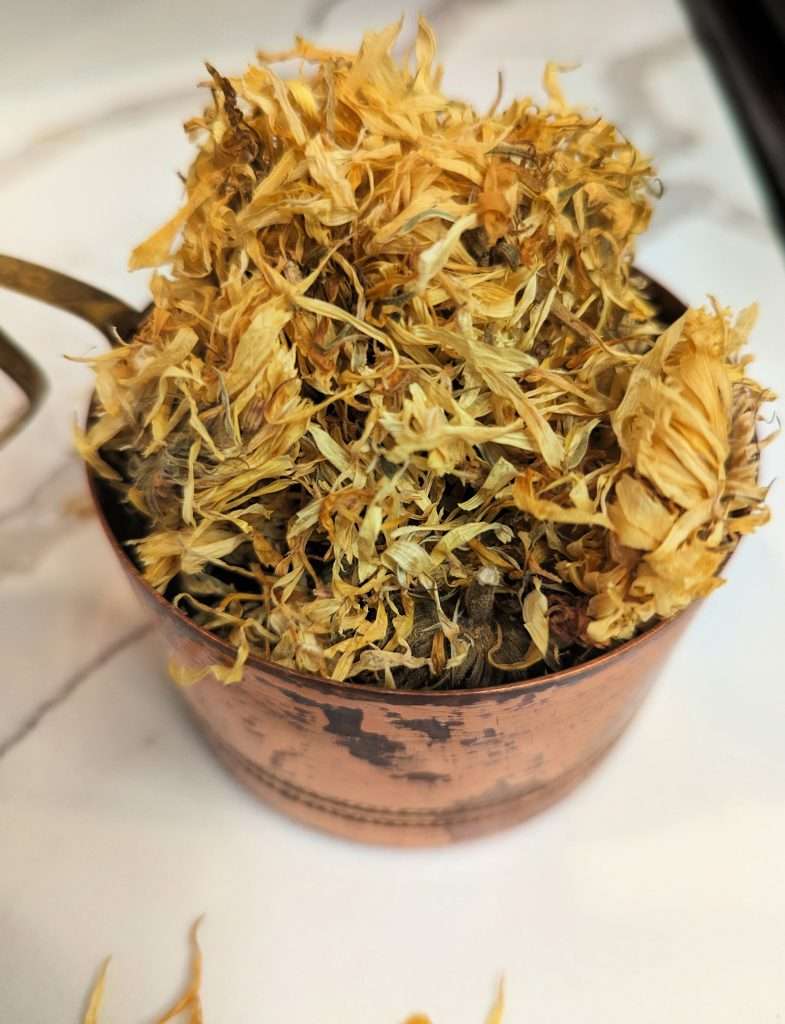
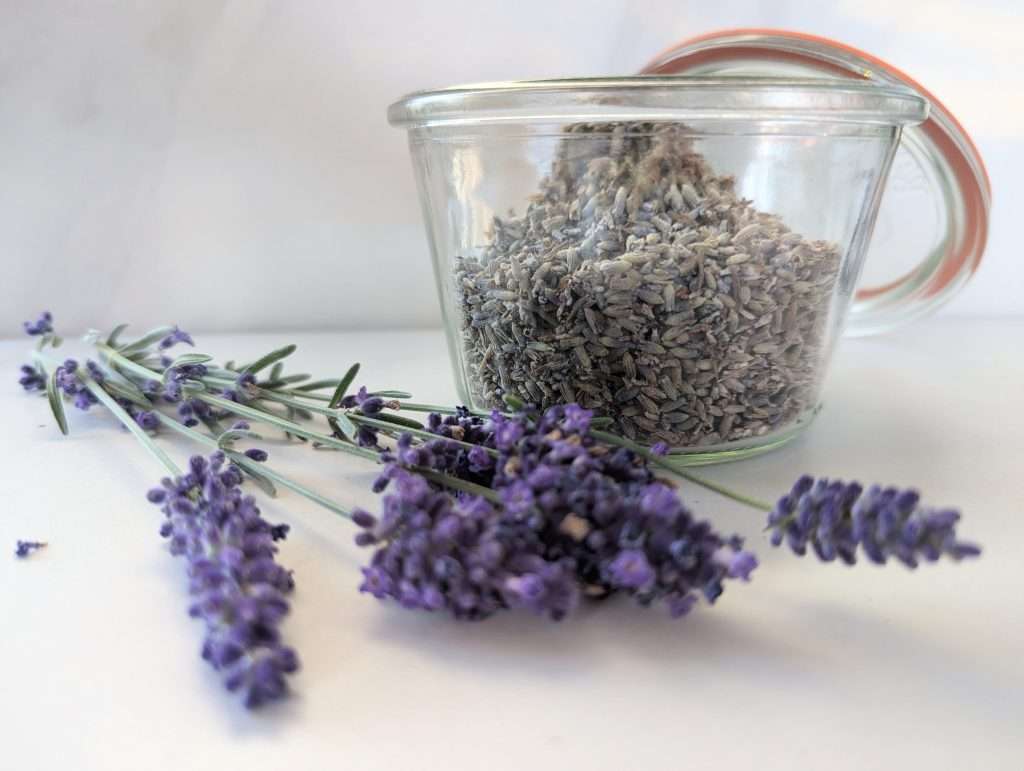
How long does an herbal oil last?
Stored in a cool, dark location, herbal oils will last for several months and sometimes even years. When you open up your container, you will be able to tell if it has gone bad (rancid) because of the smell. If it still smells like oil and the herb you used, it is still good for use. If it has a rancid smell, it should be disposed of and not used.
An herbal oil can sometimes grow mold if there is either too much water content in the herb or moisture in the jar. To prevent mold, you need to make sure that the jar you are using is completely dry prior to adding in the herb and oil. Also only use dried herbs or make sure to wilt the herbs prior to use.
How to make an herbal oil
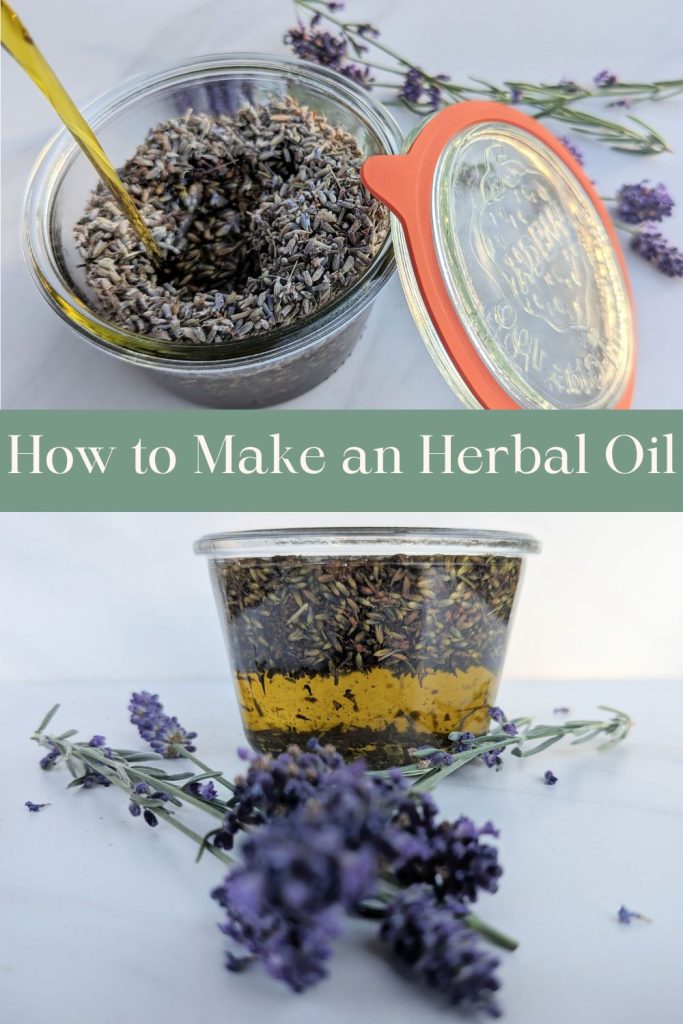
There are two main ways to make an herbal oil: solar-infused (Folk or Simplers) method and a quick method (double broiler or crock-pot).
Solar-infused (Folk or Simplers) Method
- Gather a clean and dry quart jar (or other size if desired)
- Add your herbs to the dry jar while leaving 1-3 inches of headspace.
- Add your oil over the top until it covers all of the herbs by at least 1 inch.
- Place leak proof lid on jar and shake up the herbs and oil. Check the oil level after your initial shake to make sur eyou still have at least 1 inch of oil covering your herbs.
- You will continue to shake the herbs and oil mixture 1-2 times a day for several days. You may need to add more oil in a couple days once the herbs begin to soak it up.
- Place the jar in a sunny windowsill for no less than 4 weeks. Leaving it infusing for 6 weeks will be best.
- After the 4-6 weeks of infusion, strain out the herbs from oil using a mesh strainer or cheesecloth. Make sure to squeeze out as much oil from the herbs as possible.
- Pour your herbal oil into a labeled glass jar and store in a cool dark place for several months, up to a couple years.
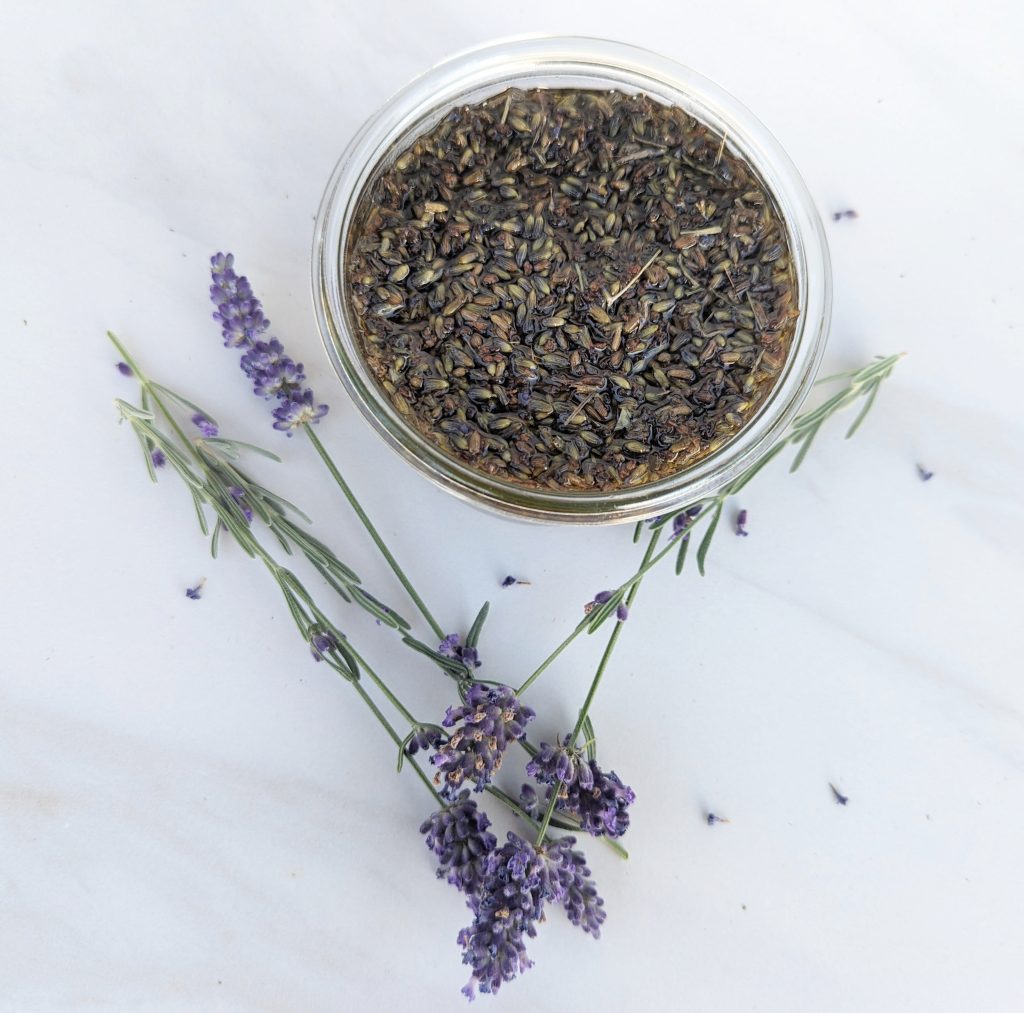
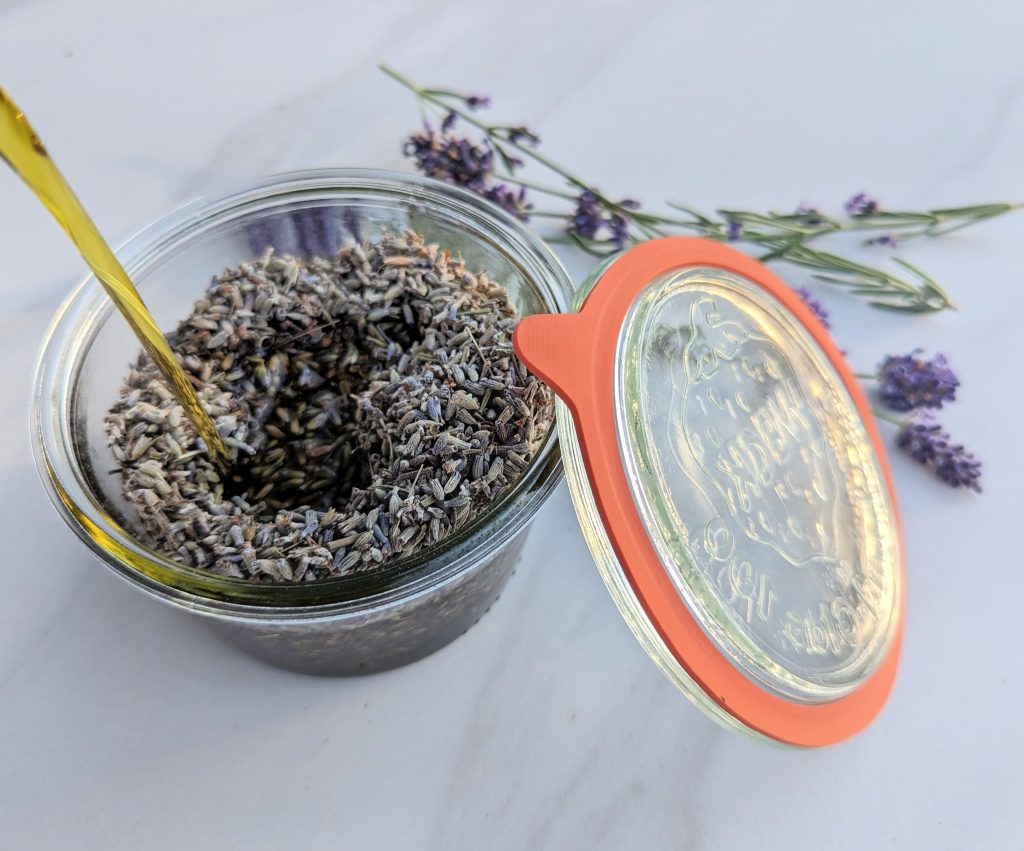
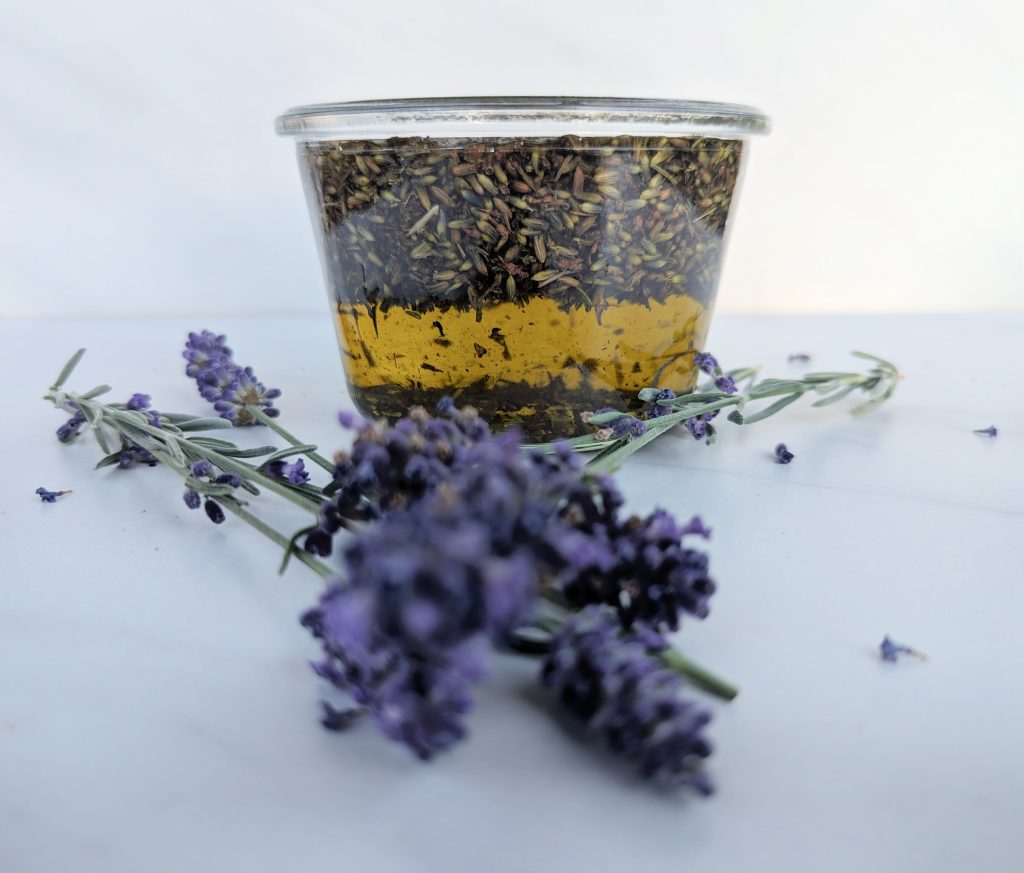
Quick Method (double broiler or crock-pot)
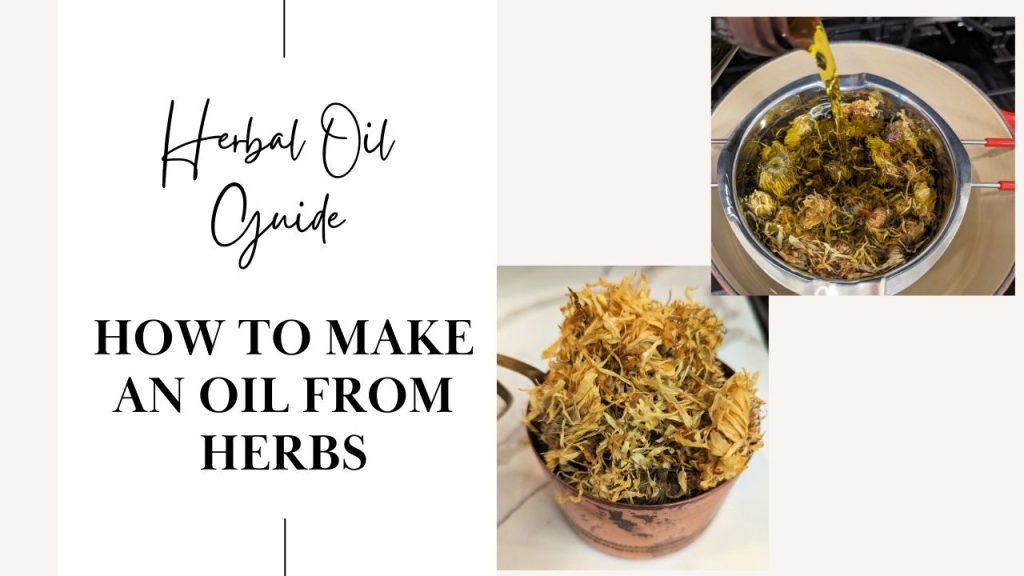
I use this method when I go to make something and realize that I do not have the amount that I would need ready for use. This is a simple and quick way to make good quality herbal oil without waiting the normal 4-6 weeks for above mentioned infusion method.
Directions:
- Add the herbs and cover with your oil of choice by at least 1 inch. The amount of herbs and oil needed will vary on your vessel size.
- Bring the double broiler or crock-pot to a low simmer for at least 30-60 minutes or 100-140 degrees for several hours. I personally infuse very low heat (100-140 degrees F) for 1-5 hours or until I can smell the herbs. Check frequently to make sure you’re not overheating your herbs. The lower and slower you heat this the better the herbal will be.
- Once the oil has cooled, strain the oil through a mesh strainer, cheesecloth or muslin cloth. Make sure to squeeze out every last drop of oil you can!
- Add the herbal oil to a clean, dry and labeled jar/bottle.
- Store in a cool dark place for at least 6 months.
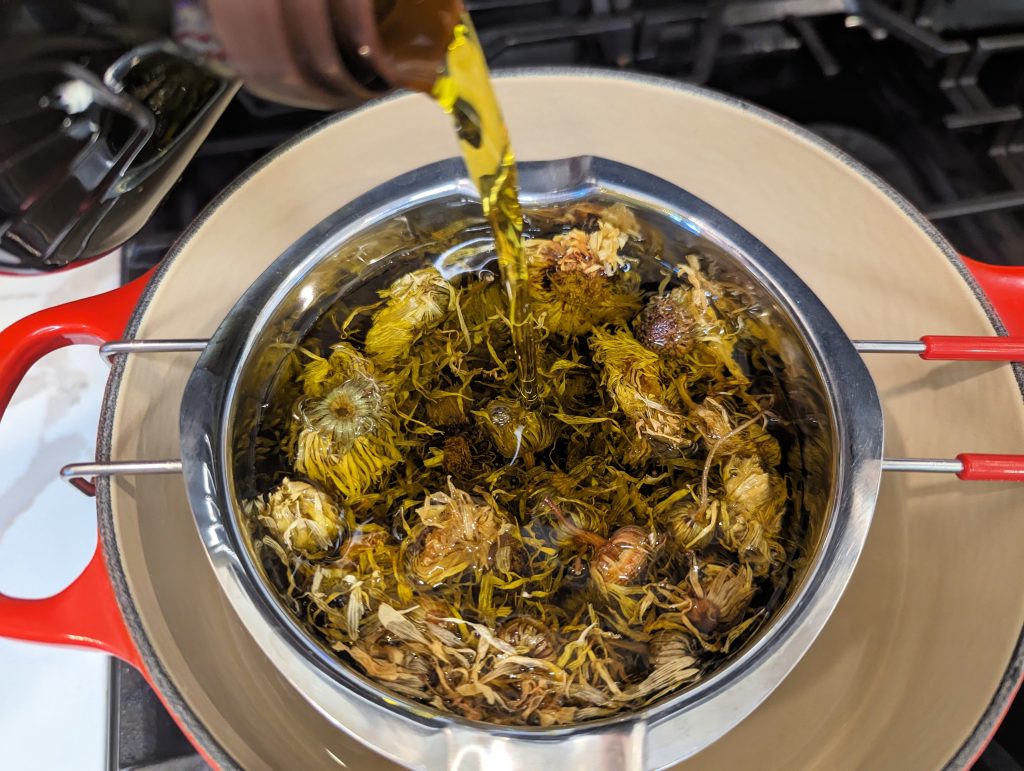
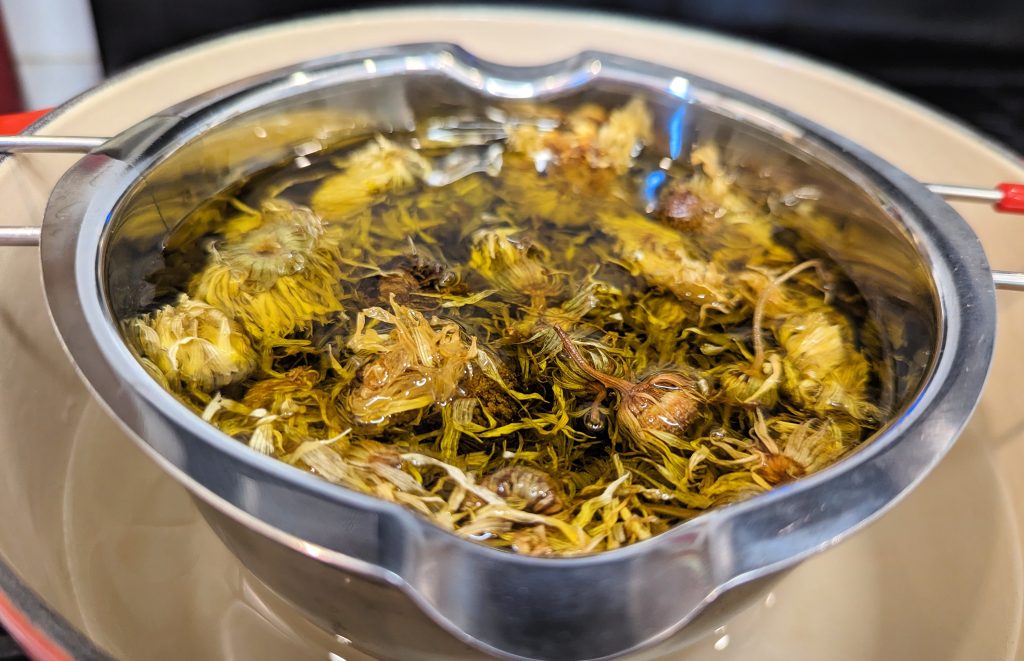
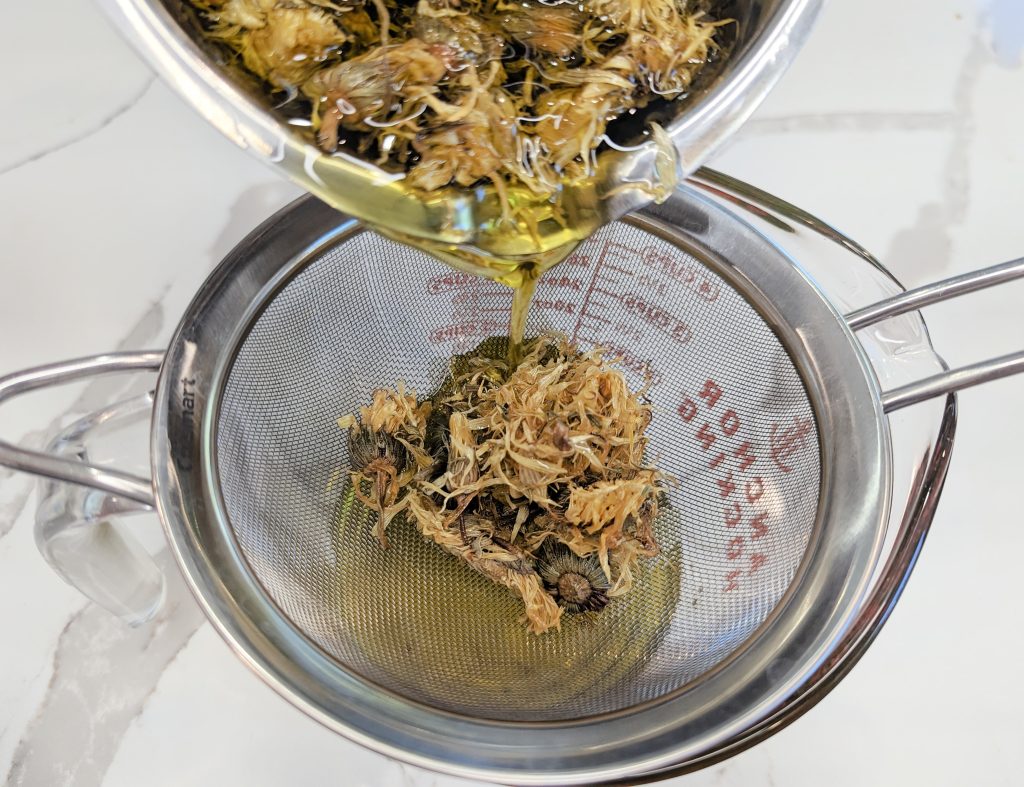
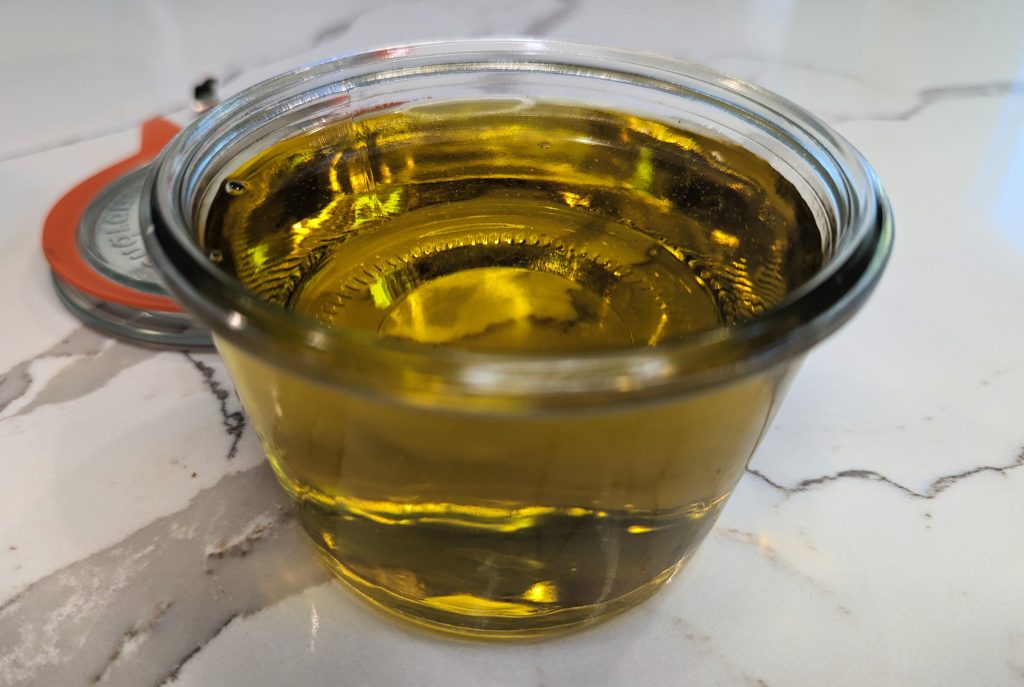
Tips on making an herbal oil.
- Some herbs may temporarily stain your hands and clothing. Wearing gloves may be needed to help prevent the temporary staining. Herbs such as turmeric can leave stains on your tools such as cheesecloth.
- Even after straining your herbs, you may find there is still sediment in your oil. This can be abrasive in some salves, lotions and other products. If you would like to strain out as much grit as possible, you can use one or two coffee liners to do so. It will take some time to strain out.
- You can infuse more than one herb together at a time, synergistic infusions, if you will be combining them together in the end product. Example is using calendula and lavender to create salves, lotions, or other body care products.
- Make sure you know what you’re wanting to use this herbal infused oil for so that you are using the correct carrier oil from the beginning.
Herbal Oil Guide: Solar-infused (Folk or Simplers) Method
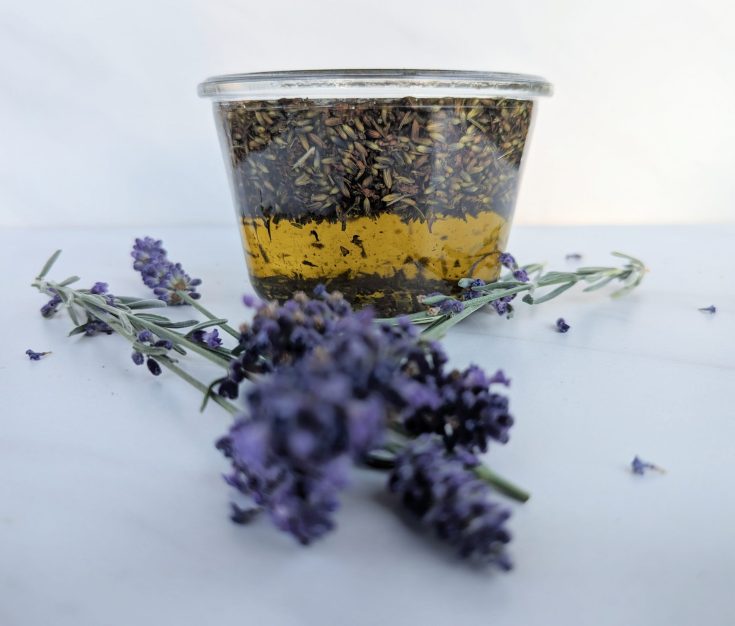
This is a step-by-step guide on how to make an herbal oil with the solar-infused (Folk or Simplers) method. An herbal oil is the foundation to DIY home remedies, bath and body products and more.
Ingredients
- herb(s) of choice
- oil of choice
Instructions
1. Gather a clean and dry quart jar (or other size if desired)
2. Add your herbs to the dry jar while leaving 1-3 inches of headspace.
3. Add your oil over the top until it covers all of the herbs by at least 1 inch.
4. Place leak proof lid on jar and shake up the herbs and oil. Check the oil level after your initial shake to make sure you still have at least 1 inch of oil covering your herbs.
5. You will continue to shake the herbs and oil mixture 1-2 times a day for several days. You may need to add more oil in a couple days once the herbs begin to soak it up.
6. Place the jar in a sunny windowsill for no less than 4 weeks. Leaving it infusing for 6 weeks will be best.
7. After the 4-6 weeks of infusion, strain out the herbs from oil using a mesh strainer or cheesecloth. Make sure to squeeze out as much oil from the herbs as possible.
8. Pour your herbal oil into a labeled glass jar and store in a cool dark place for several months, up to a couple years.
Notes
Tips on making an herbal oil.
- Some herbs may temporarily stain your hands and clothing. Wearing gloves may be needed to help prevent the temporary staining. Herbs such as turmeric can leave stains on your tools such as cheesecloth.
- Even after straining your herbs, you may find there is still sediment in your oil. This can be abrasive in some salves, lotions and other products. If you would like to strain out as much grit as possible, you can use one or two coffee liners to do so. It will take some time to strain out.
- You can infuse more than one herb together at a time, synergistic infusions, if you will be combining them together in the end product. Example is using calendula and lavender to create salves, lotions, or other body care products.
- Make sure you know what you're wanting to use this herbal infused oil for so that you are using the correct carrier oil from the beginning.
Herbal Oil Guide: Quick method (double broiler or crock-pot)
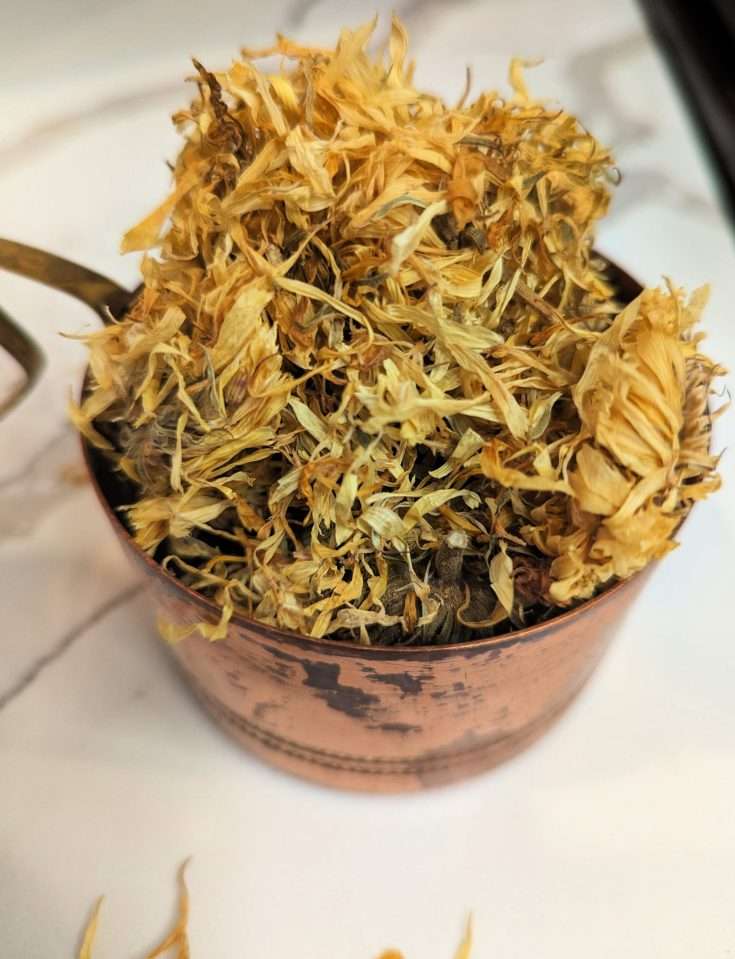
This is a step-by-step guide on how to make an herbal oil using the quick method with a double broiler or crock-pot. An herbal oil is the foundation to DIY home remedies, bath and body products and more.
Ingredients
- dried herb(s) of choice
- oil of choice enough to cover the herbs by 1 inch head space
Instructions
1. Add the herbs and cover with your oil of choice by at least 1 inch. The amount of herbs and oil needed will vary on your vessel size.
2. Bring the double broiler or crock-pot to a low simmer for at least 30-60 minutes or 100-140 degrees for several hours. I personally infuse very low heat (100-140 degrees F) for 1-5 hours or until I can smell the herbs. Check frequently to make sure you're not overheating your herbs. The lower and slower you heat this the better the herbal will be.
3. Once the oil has cooled, strain the oil through a mesh strainer, cheesecloth or muslin cloth. Make sure to squeeze out every last drop of oil you can!
4. Add the herbal oil to a clean, dry and labeled jar/bottle.
5. Store in a cool dark place for at least 6 months.
Notes
Tips on making an herbal oil.
- Some herbs may temporarily stain your hands and clothing. Wearing gloves may be needed to help prevent the temporary staining. Herbs such as turmeric can leave stains on your tools such as cheesecloth.
- Even after straining your herbs, you may find there is still sediment in your oil. This can be abrasive in some salves, lotions and other products. If you would like to strain out as much grit as possible, you can use one or two coffee liners to do so. It will take some time to strain out.
- You can infuse more than one herb together at a time, synergistic infusions, if you will be combining them together in the end product. Example is using calendula and lavender to create salves, lotions, or other body care products.
- Make sure you know what you're wanting to use this herbal infused oil for so that you are using the correct carrier oil from the beginning.
Products I recommend for this project
- Rosemary Gladstar’s Herbal Recipe Book
- Rosemary Gladstar’s Medicinal Herbs a Beginner’s Guide
- The Modern Herbal Dispensatory: A Medicine-Making Guide
- double broiler
- Wide mouth jars
Check out related posts!
Elderberry Syrup | A Busy Moms How to Guide
Check out my online store!
Pioneer Health Ministry Store Currently salves and EO products are available for shipping. Syrups are available locally only at this time.
Let me know what combinations you’ve created!
Tell me in the comments what oils and herbs are your go to or what hasn’t worked for you.

